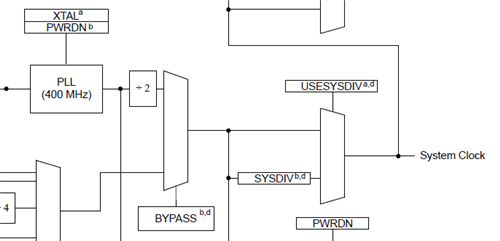Hi everyone,
My Stellaris LM3S1968 stopped working after setting the clock speed to 2MHz from an original 8MHz (line 14 of the SSCCE, line 87 of the pastie). When I try to run anything it gives the following errors now:
LMI device check failed, bad part number detected.
CORTEX M30: Error connecting to the target.
#include "inc/hw_memmap.h"
#include "inc/hw_types.h"
#include "driverlib/gpio.h"
#include "driverlib/sysctl.h"
#include "driverlib/systick.h"
#include "driverlib/debug.h"
#include "drivers/rit128x96x4.h"
#include "stdio.h"
#define SAMPLE_RATE_HZ 200000
void initClock (void) {
SysCtlClockSet(SYSCTL_SYSDIV_10 | SYSCTL_USE_PLL | SYSCTL_OSC_MAIN |
SYSCTL_XTAL_8MHZ);
SysTickPeriodSet(SysCtlClockGet() / SAMPLE_RATE_HZ);
}
void initDisplay(void) {
RIT128x96x4Init(1000000);
}
void displayValues(void) {
RIT128x96x4StringDraw("Works", 5, 5, 15);
}
int main(void) {
initClock();
}
I think this is a SSCCE (can't test it as the board isn't working) -- full code @ http://pastie.org/9125726
Does anyone know what I've done wrong or how to fix it? It is replicable (I have done it to two boards, trying to figure it out) so please be careful if changing that 8 to 2 MHz.
Thanks in advance!




